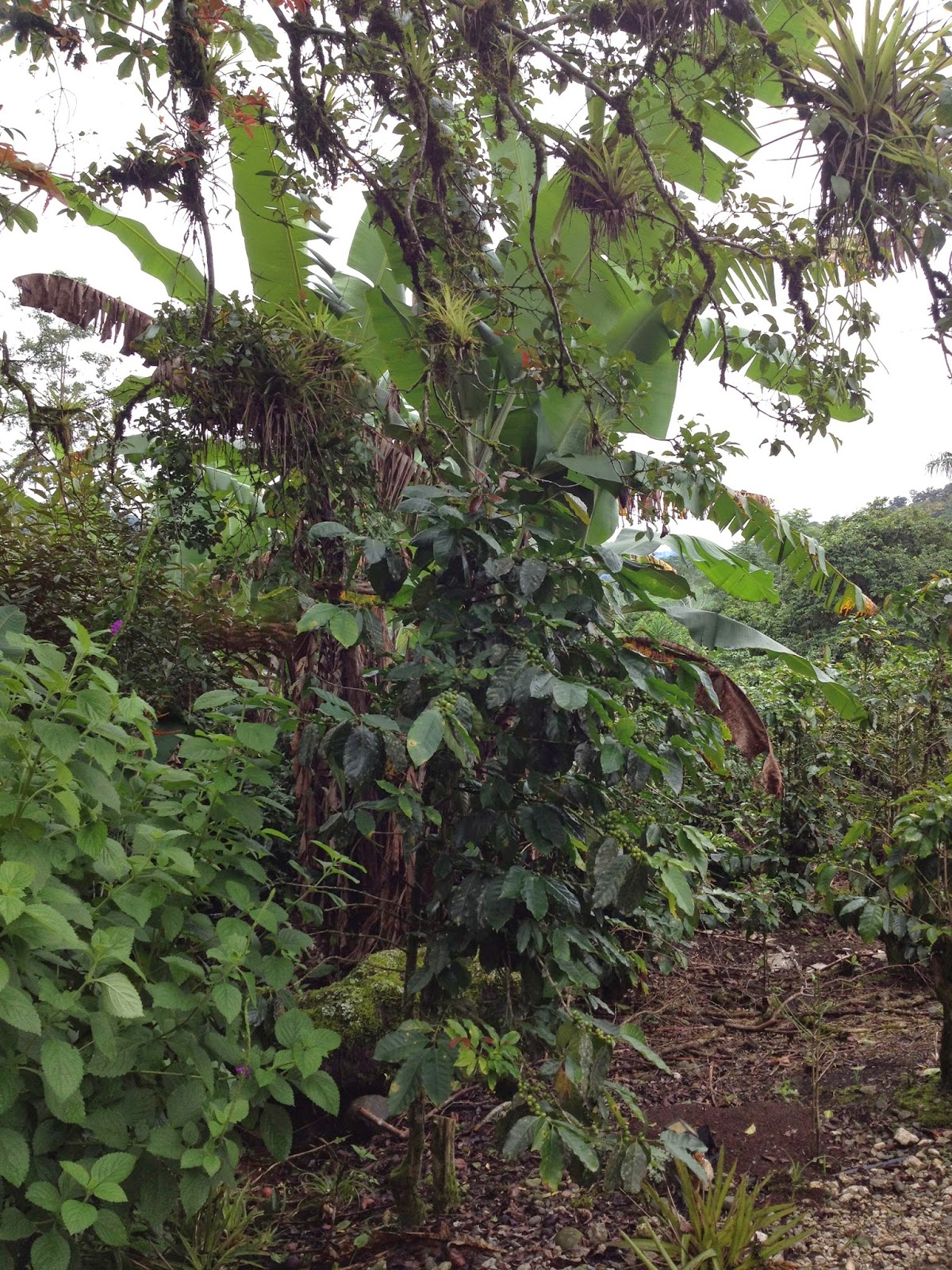How to Make Coffee, Part 1: The Fields
While in Costa Rica, we took an utterly fascinating tour of an organic coffee farm called Hacienda Real. Our Tico guide (and expert coffee taster) Tyrone picked us up in Turrialba and drove us over some muddy, hueco-ridden and largely unpaved backroads to his farm. On the way we shared (in Spanish!) our love of 80s tunes and movies (especially Footloose), but things got even more interesting once he started talking about farming.
Before stepping out into the coffee fields, we passed through a really beautiful tropical garden:
I'm not certain what any of these plants are, though I'm sure Tyrone could have told me. But once he started talking coffee beans, it was hard to think about anything else.
This is an Arabica coffee plant:
There are actually several plants here. The coffee plant in in the center, with the dark green, oblong leaves branching out of a single woody stem. To the left is verbena, which smells lemony like it does at home, but here grows taller than I am and forms a hedge. Above the coffee plant are some brown and spiky branches of a sour guava tree, and behind that you can see the wide, green leaves of a banana tree.
These plants are all part of a complex companion planting scheme. The most common pairing on the farm is that of coffee and banana. The coffee benefits from the natural shade cast by the banana trees, and this eliminates the need for row covers of manmade materials. The banana plants can also help with irrigation in the dry season if necessary, as they absorb a lot of water which they can release back to the nearby coffee plants if you cut into them. The banana plants and the rain are the only water they use here in the growing of coffee — they are very, very careful with their resources.
The verbena's lemony scent is a natural insect repellent, and the juice of the sour guava fruit can be applied to the coffee plants to help keep fungus from damaging the leaves. Here's a better photo showing the banana/coffee companion planting in action:
Not visible in the photo is the crushed limestone that makes a nice path, but also helps to bring down the acidity of the volcanic soil to make it more suitable for coffee plants.
Coffee plants flower in March and April, and at Hacienda Real they gather fallen flowers to make perfumes and soaps. Coffee is related to jasmine, and the scent is similar. Throughout spring and summer the berries grow thick along the branches of the plant :
Coffee typically ripens in August and September, and here we see the very beginning of the season with the one red coffee berry that is ripe on this branch. Most are still green, but pickers come through and gather berries by hand to ensure that only the ripest, best ones head to the on-site factory for processing. Throwing a lot of green beans into the mix would bring down the quality, and this place is really dedicated to making the best beans they can while maintaining responsible growing and trading practices.
Right now, though, field workers are finishing up cutting sugar cane at the farm next door. Sugar cane and coffee have opposite seasons, and the neighboring farms work together to keep their employees (both field workers and machinists) at work year round, which is a big plus for economic stability of the surrounding community. They also share a generator powered by a river on the property, and this allows them to keep running even when the country's electric company has one of its relatively common brownouts.
So much thought has gone into the growing practices here to keep the coffee (and workers!) free from chemicals. It was very impressive to see how they work to do the best for both the land and the people in their corner of Costa Rica.
Next stop: the factory.







Comments
Post a Comment